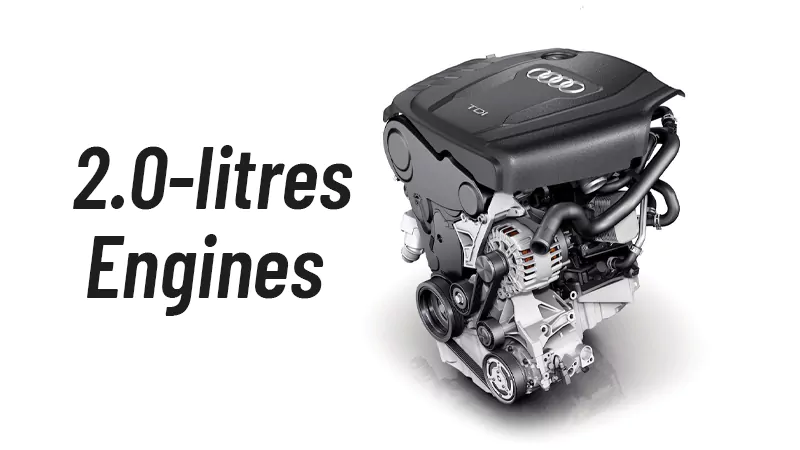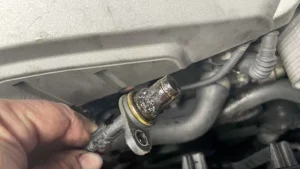If you have ever looked through the specifications of new cars—whether sedans, SUVs, or even performance models—you will notice that a remarkable number of them are fitted with engines right around the 2.0-litre mark. This trend spans across brands, countries, and price categories. From an entry-level Volkswagen Passat to a luxury Mercedes-Benz E-Class, and even in sporty offerings like the Audi S3 or Honda Civic Type R, the 2.0-litre engine has become something of a modern automotive standard. But why? Why not 1.5 litres, 2.5 litres, or 3.0 litres, as was common in previous decades? The answer lies in a complex mix of engineering optimization, regulatory pressure, and market demands.
This article explores the evolution of engine displacement, the rise of the 2.0-litre standard, and the various technical, regulatory, and economic forces that have shaped this phenomenon. By the end, it should become clear why the 2.0-litre engine has emerged as the sweet spot of modern automotive engineering.

A Brief History of Engine Sizes
In the 1980s and 1990s, engine displacement was closely tied to perceived performance and prestige. Larger engines often meant more power, smoother delivery, and a sign of premium engineering. A family sedan might easily carry a naturally aspirated 2.5- or 3.0-litre V6, while sports cars and luxury sedans were commonly equipped with 3.5- to 5.0-litre V8s. Smaller cars were powered by naturally aspirated 1.3- or 1.6-litre four-cylinder engines, designed for economy rather than performance.
However, the automotive landscape began to change dramatically in the late 1990s and early 2000s. Rising fuel prices, tightening emissions regulations, and advancements in forced induction technology reshaped the industry. Instead of simply increasing displacement for more power, manufacturers began focusing on smaller, more efficient engines that could deliver both performance and economy with the help of turbocharging and direct fuel injection.
It was during this transition that the 2.0-litre engine emerged as a kind of “Goldilocks” solution: not too big, not too small, and adaptable across a wide range of vehicle types.
The Role of Global Emissions and Fuel Economy Regulations
One of the strongest forces behind the rise of the 2.0-litre engine is regulation. Governments around the world have introduced increasingly strict limits on both fuel consumption and emissions. The European Union has led the charge, setting fleet-wide CO₂ reduction targets that require automakers to significantly reduce the average emissions of their vehicles. Similar pressures exist in the United States, China, and Japan, with each region enforcing its own standards.
The 2.0-litre displacement allows manufacturers to strike a balance. It is large enough to produce strong power output when paired with turbocharging, yet small enough to maintain respectable fuel efficiency and keep emissions within regulatory targets. This size also falls under favorable taxation categories in many markets. For example, in China, cars with engines larger than 2.0 litres face significantly higher taxes, which strongly influences manufacturers to design engines at or just under this threshold. A similar situation has historically existed in Japan and some European countries, where taxation brackets are tied to displacement.
In short, the 2.0-litre engine sits at a regulatory sweet spot: powerful enough to satisfy consumers, efficient enough to meet emissions standards, and small enough to avoid punitive taxes.
Turbocharging: The Game-Changer
The re-emergence of turbocharging in mainstream vehicles has been critical to the 2.0-litre engine’s dominance. In earlier decades, a naturally aspirated 2.0-litre four-cylinder might produce around 120–150 horsepower. Respectable, but not remarkable. Today, with direct injection, variable valve timing, and a turbocharger, a 2.0-litre engine can easily produce anywhere from 180 to over 300 horsepower, with a broad torque curve available at low RPMs.
This means a 2.0-litre turbocharged engine can replace a larger naturally aspirated V6 in terms of performance, while being smaller, lighter, and more efficient. This reduction in weight not only helps fuel economy but also improves handling dynamics, a win-win for both manufacturers and consumers.
It is no coincidence that models once offered with naturally aspirated 2.5- or 3.0-litre V6s are now almost universally fitted with turbocharged 2.0-litre four-cylinders. Examples include mid-size sedans like the Honda Accord, Toyota Camry, and Hyundai Sonata, all of which once had six-cylinder options but now rely heavily on 2.0-litre turbocharged engines as their top performance choice.
Balancing Performance, Efficiency, and Cost
From an engineering standpoint, the 2.0-litre size hits an efficient balance point. Smaller engines, such as 1.0- or 1.5-litre three- and four-cylinders, may achieve even greater fuel economy on paper, but they often struggle to deliver sufficient power in larger vehicles or under heavy loads. On the other end, larger engines like 2.5-litre and above may deliver effortless performance but quickly run afoul of efficiency and emissions requirements.
The 2.0-litre turbocharged four-cylinder is versatile enough to satisfy both needs. It can deliver a comfortable daily driving experience while also offering thrilling acceleration in sportier trims. From the perspective of manufacturing, it also simplifies production and reduces costs. Automakers can develop one versatile engine platform and adapt it across multiple models and brands, rather than producing a wide range of displacements. This modular approach is especially popular among groups like Volkswagen Group, which uses its 2.0 TSI engine across everything from the Volkswagen Golf GTI to the Audi A4 and Skoda Superb.
Consumer Expectations and Market Trends
Modern consumers want it all: performance, efficiency, and affordability. In decades past, these were competing goals. Choosing fuel economy usually meant sacrificing power, while choosing performance meant higher running costs. Today, thanks to advanced 2.0-litre turbocharged engines, buyers can have both. A driver of a compact crossover can enjoy strong torque for overtaking and highway driving, while still seeing reasonable fuel economy during city commutes.
Additionally, marketing has played a role in establishing 2.0 litres as the “normal” engine size. Car buyers now expect to see a 2.0-litre option in most product lines, and anything smaller may feel underpowered on paper, even if real-world performance is sufficient. Manufacturers are aware of this psychological factor and use the 2.0-litre engine as a baseline, even when smaller displacements might suffice for efficiency alone.
The Decline of the Six-Cylinder
Another major factor in the rise of the 2.0-litre four-cylinder has been the steady decline of six-cylinder engines in mainstream cars. A generation ago, a mid-size sedan with a V6 was almost standard in many markets. Today, V6s are reserved for performance models, large SUVs, and luxury cars, while the everyday sedan and crossover rely heavily on the 2.0-litre turbo.
This shift is driven not only by efficiency requirements but also by cost and packaging. A four-cylinder engine is lighter and takes up less space, freeing room for hybrid components, crash structures, and interior packaging. It also reduces overall production costs. From the perspective of a manufacturer under pressure to meet fuel economy targets and offer affordable vehicles, replacing a V6 with a turbocharged 2.0-litre is a logical step.
Regional Influences and Taxation
As mentioned earlier, taxation policies play an enormous role in shaping displacement strategies. China, the world’s largest car market, has a steep tax increase for engines larger than 2.0 litres. That alone is enough to incentivize global manufacturers to prioritize engines under that mark. In Europe, emissions-based taxes further reinforce the preference for smaller turbocharged engines. Even in the U.S., where fuel has historically been cheaper and displacement taxes less relevant, Corporate Average Fuel Economy (CAFE) standards encourage automakers to downsize engines without sacrificing performance.
In short, the 2.0-litre displacement is not just a technical decision but a response to the economic and regulatory realities of the world’s most important automotive markets.
Is 2.0 Litres the Final Stop?
It is important to note that while the 2.0-litre engine is dominant today, the future may bring new standards. Some manufacturers are experimenting with 1.5-litre turbocharged engines as replacements in smaller vehicles, while others are investing heavily in full electrification. Still, given the global regulatory environment, cost pressures, and consumer expectations, it seems likely that the 2.0-litre engine will remain a staple of the industry for at least the next decade.
The only real threat to its dominance is the rise of fully electric powertrains. Once EV infrastructure and battery technology reach maturity, internal combustion engines may decline altogether. But until then, the 2.0-litre turbo four-cylinder remains the benchmark internal combustion engine of the modern era.
Conclusion
The dominance of the 2.0-litre engine is no coincidence. It represents a carefully engineered balance between performance, efficiency, emissions compliance, and cost. From family sedans to performance hatchbacks and even some premium SUVs, the 2.0-litre four-cylinder turbo has become the modern industry benchmark. Yet, as electrification continues to advance, even this versatile engine will eventually give way to new technologies. Until then, the 2.0-litre remains the heart of the modern combustion era.
At XINJIN, we are proud to stand at the forefront of engine manufacturing, delivering reliable, high-performance solutions to meet the needs of businesses and automotive professionals worldwide. Whether you require standard configurations or tailored designs, our expertise ensures that you receive engines built for durability, precision, and innovation. If you are looking for a trusted partner in engine production, contact XINJIN today and discover how we can power your success.



